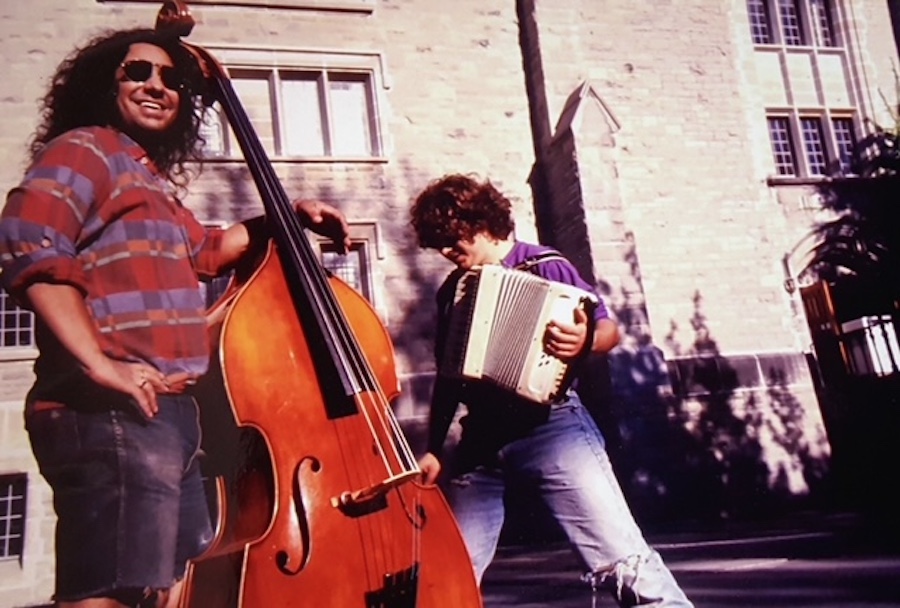When my son learned that starting middle school meant taking an instrumental music class, I don’t know which one of us was more thrilled. I grew up with the violin and had fond memories of playing it throughout high school. My son dreamed of playing the drums, but when that didn’t come true (percussion is apparently a very popular choice for grade seven students), he happily settled on the trumpet as his new instrument of choice.
I expected a lot of things: to be irritated by the toneless toots of a beginner trumpet player, to have to badger him into practicing when the novelty of toneless toots wore off, and, of course, to be an obnoxiously proud mom in the audience of all of his performances. What I didn’t expect was that his music class – a core class that every child in his grade has to take – would come with a $200 price tag, the cost of renting his instrument from a large Canadian music chain.
You may unsubscribe from any of our newsletters at any time.
It’s not the school’s fault, of course. Funding for music classes in Ontario public schools has been slashed repeatedly over the past few decades, and we’re not alone – music departments in many provinces are struggling, especially in the wake of the pandemic. My son is fortunate to have access to an instrumental program at all. Still, it’s very different from my experience in high school, where our music rooms were well-stocked with instruments that students could borrow at no cost. And I can’t help but think that $200 is a lot of money for many families these days, especially at the beginning of the school year when parents have plenty of back-to-school expenses.
Music education is often seen as “fringe, or a frill,” says Dr. Adam Con, co-head of the University of Victoria’s music education program and principal investigator of the National Study on the Status of Music Education, but there’s plenty of evidence showing that music instruction helps children’s development on multiple fronts.
“It’s really important in developing spatial reasoning, listening skills, and concentration skills. [It develops skills supporting] social community and working with others,” says Con. “There’s just so much science about the benefits of music education.”
But in spite of the clear advantages of having music classes in public schools, there are clear barriers. Many programs have shrunk or completely shuttered in the wake of COVID.
“You know that old adage, once you lose something, it’s hard to get it back,” says Con. “People shut down the music programs, especially singing, during COVID. Once they were gone, people thought, well, we’ll use the funding for other things now, whatever their priorities were.”
More on Broadview:
- This choir for Canadian newcomers offers more than singing lessons
- Celebrated composer Eleanor Daley on what inspires her choral work
- Sufjan Stevens’ latest album, Javelin, is a soulful ode to queer romance, faith and grief
There are also financial barriers. Con points out that music programs are pricey – in a postsecondary setting, they’re among the most expensive that a university can run, since, unlike many other programs, music requires one-on-one instruction. There’s no way a program like that can be as lucrative as one that can teach 200 students at a time in an auditorium. However postsecondary institutions can run arts programs at a deficit and subsidize them with funds from departments that are generating more income.
“But public education doesn’t have that,” says Con. “It’s one pot. And there are people, primarily administrators, making the decision on who gets the money. And that becomes part of the problem with regard to equity. Equity means whatever it means to the people who are making the decisions in the room. When it comes to equity, it’s about who’s at the table.”
While renting an instrument was the main option presented to students, fortunately, it wasn’t the only option. Here in Kingston, Ontario, there’s the Joe Chithalen Memorial Musical Instrument Lending Library, better known as Joe’s M.I.L.L.
Joe Chithalen was a beloved local musician who played in several well-regarded bands in the 90s, including Weeping Tile (with Sarah Harmer) and The Mahones. Chithalen died suddenly at the age of 31 while on tour. After his death, his friends and family got to work building something that Chithalen had always dreamed of — a library of instruments that was open to the public.
“He was just a really wonderful, generous, encouraging person, and other musicians loved, just absolutely loved him,” says Nancy Webb, who is on the board of directors at Joe’s M.I.L.L. She said he dreamed of giving others the opportunity to play or learn a musical instrument.
Founded in 2001, Joe’s M.I.L.L. is a registered non-profit that has over 1,000 instruments, which can be borrowed by any Kingston resident. The only cost is a $25 registration fee, which goes towards their day-to-day operations. This past year, the library served 940 people.
An organization like Joe’s M.I.L.L. is an amazing resource. It can help make music education more accessible, but there’s only so much they can do – one local library won’t be able to supply instruments to all of the middle and high school students in a city. Also, as Con points out, Canada is a huge and diverse country, and for music in public schools to be fully equitable to all students, we need to consider ways of teaching it that fall outside of what Con refers to as the “Western paradigm” of band instruments. That type of music may not be meaningful or useful to Indigenous students, for example, who have their own musical traditions.
Want to read more from Broadview? Consider subscribing to one of our newsletters.
“The conversation about equity is complex,” says Con. “But what we’re ultimately trying to do is […] give the experience of music education to the students no matter their social or cultural background, or their economic resources.”
But that just can’t happen when parents have to pay hundreds of dollars for their children to participate in music education in public schools.
In explaining the mission statement behind Joe’s M.I.L.L., Nancy Webb tells me that it aims is to “give everyone (and especially those who otherwise wouldn’t have it) the opportunity to play a musical instrument and enjoy the proven benefits that brings to individuals and our community. To me, that should broadly be the aim of all public education – to meet children where they are and foster whatever talents they have. When even core classes are financially out of reach to some students, all we have is a system that advances children from privileged backgrounds, while other children are left further and further behind.”
***
Anne Thériault is a freelance writer in Kingston, Ont. She also co-hosts Broadview’s podcast, And Also Some Women.
We hope you found this Broadview article engaging.
Our team is working hard to bring you more independent, award-winning journalism. But Broadview is a nonprofit and these are tough times for magazines. Please consider supporting our work. There are a number of ways to do so:
- Subscribe to our magazine and you’ll receive intelligent, timely stories and perspectives delivered to your home 8 times a year.
- Donate to our Friends Fund.
- Give the gift of Broadview to someone special in your life and make a difference!
Thank you for being such wonderful readers.
Jocelyn Bell
Editor/Publisher













